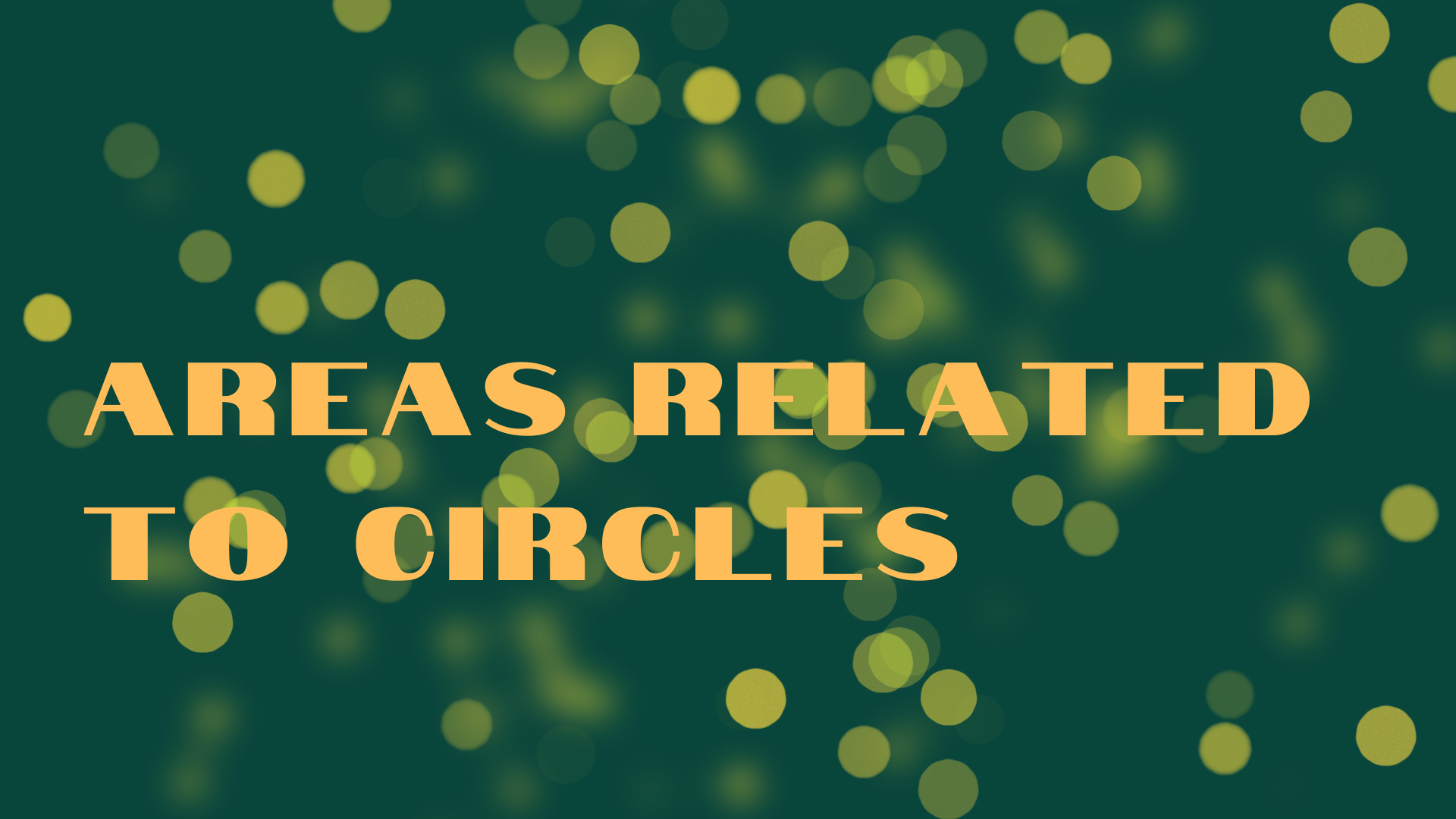Understanding the properties and calculations related to circles is fundamental in mathematics. From the ancient times to modern-day applications, circles have played a crucial role in various fields such as geometry, physics, engineering, and more. In this article, we will delve into the world of areas related to circles, exploring the concepts, methods, and real-world applications, while providing step-by-step examples to facilitate understanding.
Basic Concepts
Before we delve into the methods of calculating areas related to circles, let’s review some fundamental concepts:
Radius and Diameter:
The radius is the distance from the center of a circle to any point on its edge, while the diameter is twice the radius.
Circumference:
The circumference of a circle is the distance around its edge. It is given by the formula: (C = 2\pi r), where (r) is the radius.
Area of a Circle:
The area of a circle is the space enclosed by its edge. It is calculated using the formula: (A = \pi r^2), where (r) is the radius.
Methods for Calculating Areas Related to Circles
There are several scenarios where circles interact with other geometric shapes, leading to the calculation of areas related to circles. Let’s explore two common methods for solving these problems: sector area and segment area calculations.
Method 1: Sector Area Calculation
A sector of a circle is a region enclosed by two radii and the corresponding arc. To calculate the area of a sector, follow these steps:
Step 1:
Identify the radius (r) and the angle (θ) (in radians) subtended by the sector at the center of the circle.
Step 2:
Use the formula for the area of a sector: (A_{\text{sector}} = \frac{1}{2} r^2 θ).
Example: Calculating the Area of a Sector
Consider a circle with a radius of 8 cm, and a sector subtending an angle of (60^\circ) at the center. Let’s calculate the area of the sector.
Step 1: Given (r = 8) cm and (θ = 60^\circ), convert (θ) to radians: (θ = \frac{60}{180} \pi = \frac{\pi}{3}).
Step 2: Use the formula (A_{\text{sector}} = \frac{1}{2} r^2 θ):
[A_{\text{sector}} = \frac{1}{2} \times 8^2 \times \frac{\pi}{3} = \frac{64}{3} \pi \approx 67.03 \, \text{cm}^2].
Methods for Calculating Areas Related to Circles
A segment of a circle is the region enclosed by a chord and the arc it subtends. To calculate the area of a segment, use these steps:
Step 1:
Identify the radius (r), the angle (θ) (in radians), and the length of the chord.
Step 2:
Calculate the area of the corresponding sector using (A_{\text{sector}} = \frac{1}{2} r^2 θ).
Step 3:
Use the formula (A_{\text{segment}} = A_{\text{sector}} – \text{Area of Triangle}), where the triangle is formed by the two radii and the chord.
Example: Calculating the Area of a Segment
Consider a circle with a radius of 10 cm, and a chord of length 12 cm, subtending an angle of (120^\circ) at the center. Let’s calculate the area of the segment.
Step 1:
Given (r = 10) cm, (θ = 120^\circ), and chord length (c = 12) cm. Convert (θ) to radians: (θ = \frac{120}{180} \pi = \frac{2}{3} \pi).
Step 2:
Calculate the area of the sector using (A_{\text{sector}} = \frac{1}{2} r^2 θ):
[A_{\text{sector}} = \frac{1}{2} \times 10^2 \times \frac{2}{3} \pi = \frac{100}{3} \pi \approx 104.72 \, \text{cm}^2].
Step 3:
Calculate the area of the triangle using its base and height:
[A_{\text{triangle}} = \frac{1}{2} \times c \times r = \frac{1}{2} \times 12 \times 10 = 60 \, \text{cm}^2].
Step 4:
Calculate the area of the segment using (A_{\text{segment}} = A_{\text{sector}} – A_{\text{triangle}}):
[A_{\text{segment}} = \frac{100}{3} \pi – 60 = \frac{100}{3} \pi – \frac{180}{3} = \frac{100 – 180}{3} \pi = -\frac{80}{3} \pi \approx -83.77 \, \text{cm}^2].
Real-World Applications
Areas related to circles have numerous applications in various fields. Some examples include:
Construction:
Architects and engineers use circle-related calculations to design circular structures like domes, arches, and circular bridges.
Manufacturing:
Circular patterns and components are common in manufacturing industries. Calculations related to areas of circular sections are crucial for designing parts such as gears and bearings.
Landscaping:
Circular lawns, fountains, and other landscaping features often require calculations of circular areas.
Physics:
Circular motion calculations are crucial in physics, where understanding areas of circular sections helps analyze rotational motion, angular velocity, and more.
Art and Design:
Artists and designers often use circular patterns and shapes in their creations. Calculating areas related to these circles contributes to achieving desired aesthetics.
Areas related to circles hold a significant place in mathematics due to their practical applications and intricate geometric properties. In this article, we explored two methods for calculating areas of sectors and segments, providing step-by-step examples for each. These calculations find relevance in various real-world scenarios, underscoring the importance of mastering these concepts. From construction to physics, circular calculations are essential tools that enable us to understand and shape the world around us. So whether you’re a student aiming to ace your maths exams or a professional looking to apply mathematical principles in your field, maths.ai is a valuable asset that opens doors to a myriad of possibilities.



